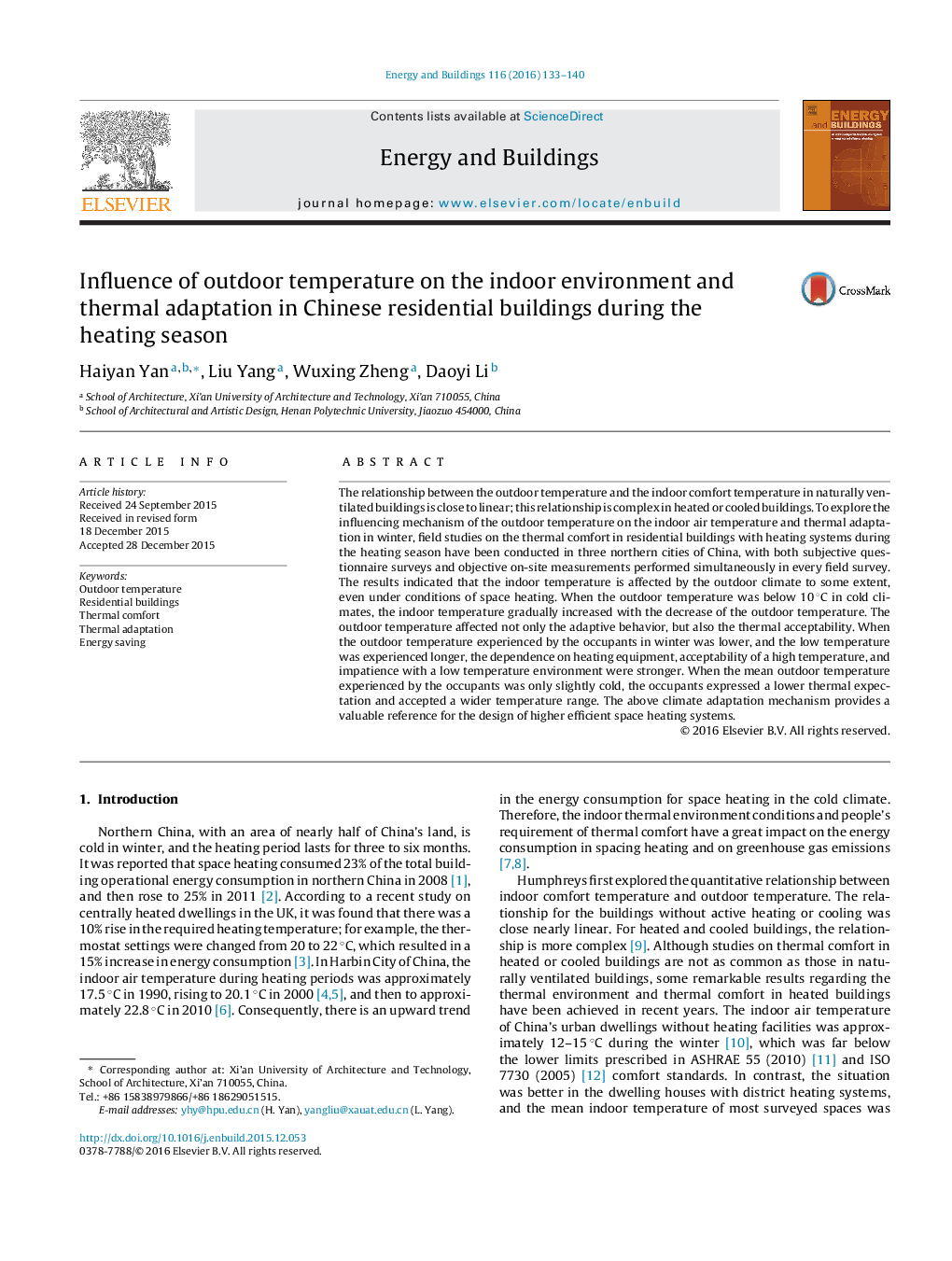| Article ID | Journal | Published Year | Pages | File Type |
|---|---|---|---|---|
| 6730453 | Energy and Buildings | 2016 | 8 Pages |
Abstract
The relationship between the outdoor temperature and the indoor comfort temperature in naturally ventilated buildings is close to linear; this relationship is complex in heated or cooled buildings. To explore the influencing mechanism of the outdoor temperature on the indoor air temperature and thermal adaptation in winter, field studies on the thermal comfort in residential buildings with heating systems during the heating season have been conducted in three northern cities of China, with both subjective questionnaire surveys and objective on-site measurements performed simultaneously in every field survey. The results indicated that the indoor temperature is affected by the outdoor climate to some extent, even under conditions of space heating. When the outdoor temperature was below 10 °C in cold climates, the indoor temperature gradually increased with the decrease of the outdoor temperature. The outdoor temperature affected not only the adaptive behavior, but also the thermal acceptability. When the outdoor temperature experienced by the occupants in winter was lower, and the low temperature was experienced longer, the dependence on heating equipment, acceptability of a high temperature, and impatience with a low temperature environment were stronger. When the mean outdoor temperature experienced by the occupants was only slightly cold, the occupants expressed a lower thermal expectation and accepted a wider temperature range. The above climate adaptation mechanism provides a valuable reference for the design of higher efficient space heating systems.
Related Topics
Physical Sciences and Engineering
Energy
Renewable Energy, Sustainability and the Environment
Authors
Haiyan Yan, Liu Yang, Wuxing Zheng, Daoyi Li,
